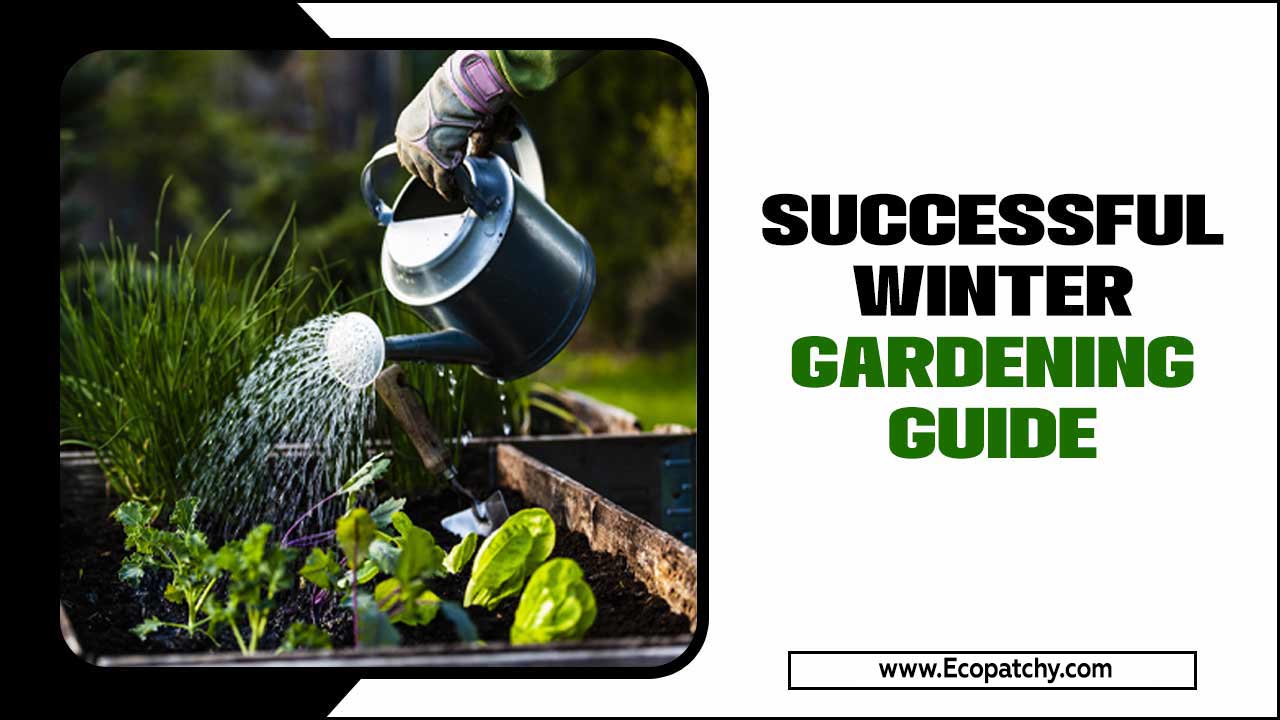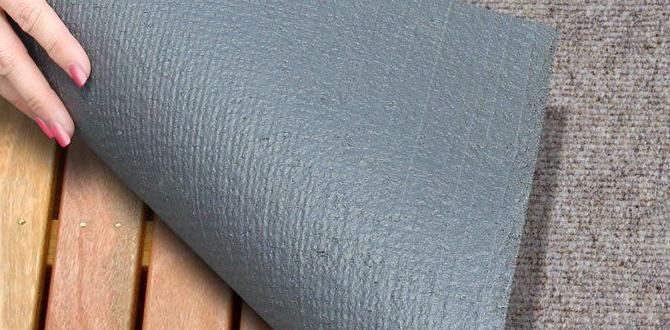Banana peel fertilizer is a fantastic, natural way to nourish your plants, boosting their growth with essential nutrients like potassium and phosphorus for healthier, happier blooms and fruits, all while reducing kitchen waste.
Ever feel like your plants could use an extra boost but cringe at the thought of expensive store-bought fertilizers? You’re not alone! Many beginner gardeners, whether tending to a sun-drenched patio or a cozy indoor jungle, face the challenge of keeping their green friends thriving without breaking the bank. Sometimes, even with the best intentions, our plants just don’t reach their full, vibrant potential. The good news is, a treasure trove of plant nutrients might already be in your kitchen, right in your fruit bowl! Get ready to transform an everyday kitchen scrap into a powerful plant booster. We’ll walk you through how to harness the amazing benefits of banana peels for your garden.
Unlock Your Plants’ Potential with Banana Peel Fertilizer
Think of your banana peels as tiny powerhouses, packed with beneficial elements that your plants adore. For years, gardeners have sworn by this simple, eco-friendly trick to supercharge their soil and encourage robust growth. It’s a fantastic way to give back to your plants while being kind to the planet. Let’s dive into why banana peels are such a garden superstar!
The Nutrient Powerhouse Within Banana Peels
Banana peels are more than just a leftover; they’re a potent source of vital plant nutrients. Understanding what they offer helps us appreciate why they’re so effective. The primary star here is potassium, crucial for flower and fruit development, disease resistance, and overall plant vigor. But that’s not all!
- Potassium (K): This is the big one! Potassium is essential for photosynthesis, water regulation, chlorophyll development, and strengthening plants against pests and diseases. It plays a massive role in the blooming and fruiting stages.
- Phosphorus (P): Another key player, phosphorus supports root development, flowering, and fruiting. A healthy root system means a more stable and well-nourished plant.
- Calcium (Ca): Important for cell wall structure and growth, calcium helps prevent blossom end rot in fruits like tomatoes and provides structural integrity to plant tissues.
- Magnesium (Mg): Crucial for chlorophyll production, which is vital for photosynthesis. Healthy magnesium levels mean greener leaves and more energy for the plant.
- Micronutrients: Banana peels also contain smaller amounts of other beneficial elements like iron, manganese, and zinc, which contribute to overall plant health and various metabolic processes.
Why Choose Banana Peel Fertilizer?
Switching to natural fertilizers like banana peels offers a multitude of advantages, especially for beginners looking for simple, effective, and sustainable solutions. It’s a cost-effective method that directly contributes to a greener lifestyle.
- Cost-Effective: You’re using something you’d otherwise throw away, making it virtually free!
- Eco-Friendly: Reduces kitchen waste, diverting it from landfills and turning it into valuable garden food.
- Improves Soil Health: As the peels decompose, they add organic matter to the soil, improving its structure, water retention, and aeration.
- Gentle Nutrient Release: Natural decomposition means nutrients are released slowly, reducing the risk of over-fertilizing and burning plant roots, a common mistake for new gardeners.
- Encourages Beneficial Microbes: The decomposition process can foster a healthier soil microbiome, which is beneficial for plant growth.
Methods for Creating Banana Peel Fertilizer
There are several easy ways to prepare banana peels for your plants. Each method offers slightly different benefits and preparation times, so you can choose the one that best fits your needs and gardening style. Whether you’re planting indoors, outdoors, or in containers, there’s a banana peel fertilizer method for you.
1. The “Soak and Spray” Method (Banana Peel Water)
This is one of the quickest ways to get the goodness of banana peels into your soil. It’s perfect for a quick plant pick-me-up.
What You’ll Need:
- Banana peels (from 1-2 bananas)
- A jar or container
- Water
- A watering can
Steps:
- Chop the banana peels into smaller pieces (about 1-2 inches long). This helps them break down faster.
- Place the chopped peels into your jar or container.
- Fill the container with water, ensuring the peels are fully submerged. You can use a 1:1 ratio of peels to water, or more water if you want a milder solution.
- Cover the container loosely (to allow some airflow) and let it sit for 24-72 hours. The water will start to turn brownish as the nutrients leach out.
- After soaking, strain the peels out. You can compost the leftover peels.
- Dilute the banana water with fresh water. A good starting point is a 1:1 ratio of banana water to fresh water. You can adjust this based on your plants’ needs – start weaker and observe.
- Use this diluted “banana tea” as a liquid fertilizer, watering your plants directly at the soil level.
Best for: Houseplants, vegetables, and flowering plants that can benefit from a regular nutrient boost. Apply every 2-4 weeks during the growing season.
2. Direct Burial Method
This is the simplest zero-effort method. You’re essentially adding nutrient-rich compost directly to your soil.
What You’ll Need:
- Banana peels
- A trowel or small shovel
Steps:
- Cut or tear the banana peels into small pieces. Smaller pieces will decompose more quickly.
- Dig a small hole or trench in the soil around your plant. Aim to keep the peels a few inches away from the main stem to avoid any potential issues with pests or rot near the base. For outdoor gardens, you can bury them directly in garden beds. For potted plants, dig into the potting mix.
- Place the banana peel pieces into the hole.
- Cover the peels with at least 2-3 inches of soil. This is important to prevent attracting pests and to allow for proper decomposition.
- Water the soil thoroughly.
Best for: Outdoor garden beds, larger container plants, and fruit-bearing trees or shrubs. Since decomposition takes time, this method is great for a slow-release nutrient supply throughout the growing season.
3. Drying and Grinding Method
This method creates a powder that’s easy to store and use, similar to commercial granular fertilizers.
What You’ll Need:
- Banana peels
- Oven or dehydrator (optional, but speeds up the process)
- Coffee grinder or food processor
- Fine sieve (optional)
Steps:
- Dry the peels: You can air dry them by leaving them in a warm, dry place for several days until they become brittle. Alternatively, you can speed up the process by drying them in a low-temperature oven (around 200°F / 95°C) or in a dehydrator until completely dry and brittle.
- Grind into powder: Once completely dry, break the peels into smaller pieces and grind them into a fine powder using a coffee grinder or food processor dedicated to non-food items, or a clean one you won’t mind having a slight banana scent in.
- Sieve (optional): For an even finer powder, you can pass it through a fine sieve.
- Store: Store the banana peel powder in an airtight container in a cool, dry place.
- Apply: You can sprinkle this powder directly onto the soil around your plants, lightly working it in, or mix it into potting soil for new plantings. A tablespoon or two per plant is usually sufficient for potted plants, with more for larger garden beds.
Best for: All types of plants, including indoor plants, vegetables, and ornamentals. It’s easy to measure and incorporate, and the powder is stable for long-term storage.
4. Composting Banana Peels
Adding banana peels to your compost bin is perhaps the most comprehensive way to utilize their nutritional value. Composting breaks down the peels completely, creating a nutrient-rich humus that benefits your soil immensely.
Steps:
- Chop banana peels into smaller pieces to speed up decomposition.
- Add them to your compost pile along with other kitchen scraps (vegetable and fruit peels, coffee grounds, eggshells) and yard waste (leaves, grass clippings).
- Ensure your compost pile has a good balance of “greens” (nitrogen-rich materials like food scraps) and “browns” (carbon-rich materials like dried leaves and cardboard). Banana peels are considered a “green” material.
- Keep the compost moist and turn it regularly to aerate it and speed up the decomposition process.
- Once the compost is dark, crumbly, and earthy-smelling (which can take a few weeks to several months), it’s ready to be mixed into your garden beds or potting soil.
Best for: All gardeners, especially those with larger gardens who want to create their own high-quality soil amendment. Researching your specific compost bin method can help optimize this process. The Environmental Protection Agency (EPA) offers great resources on home composting.
Which Plants Benefit Most from Banana Peel Fertilizer?
While virtually all plants appreciate the nutrients found in banana peels, some are particularly responsive and will show remarkable improvement. These often include plants that are heavy feeders or have specific nutrient needs that banana peels directly address.
Here’s a look at some of the prime beneficiaries:
- Tomatoes: Potassium is crucial for fruit development, and calcium helps prevent blossom end rot, a common issue for tomatoes.
- Roses: These beauties thrive on potassium, which promotes abundant blooms and stronger stems.
- Peppers: Similar to tomatoes, peppers benefit from potassium for fruit production and calcium to prevent issues like blossom end rot.
- Cucumbers: Potassium is essential for healthy growth and fruit set.
- Beans and Peas: These legumes can benefit from the phosphorus for root development and potassium for overall plant health.
- Houseplants: Many houseplants, especially flowering varieties like orchids or African violets, appreciate the boost of potassium for improved blooms and general vitality.
- Fruit Trees and Berry Bushes: Established plants like apple trees, peach trees, and blueberry bushes significantly benefit from the potassium and phosphorus for improved fruit quality and yield.
Even plants that don’t fall into these categories will likely show improved vigor. It’s a gentle, all-around beneficial supplement for most garden inhabitants.
Potential Drawbacks and How to Avoid Them
While banana peel fertilizer is fantastic, it’s good to be aware of a few potential pitfalls. Being informed helps ensure you get the best results for your plants.
- Attracting Pests: If peels are left exposed on the soil surface, they can attract fruit flies, ants, or other unwanted visitors. Always bury them well or enclose them in compost.
- Slow Decomposition: Whole peels can take a long time to break down, especially in cooler conditions. Chopping them into smaller pieces or drying/grinding them significantly speeds up nutrient availability.
- Over-application (Rare): While it’s hard to over-fertilize with natural methods, using large quantities of undiluted direct peels in a very small pot could theoretically impact soil structure or pH slightly, though this is highly unlikely with typical use.
- Contamination: If you’re concerned about pesticides on conventional bananas, consider using organic banana peels.
Tips for success:
- Always bury peels or ensure they are covered by soil.
- Chop, dry, or grind peels for faster nutrient release and easier application.
- Use the soaking method for a quick liquid feed.
- Balance your banana fertilizer with other organic amendments and practices for comprehensive plant nutrition. The National Gardening Association often provides further guidance on balanced plant nutrition.
A Comparative Look at Banana Peel Fertilizer Methods
To help you choose the best approach, let’s compare the main methods side-by-side:
| Method | Preparation Time | Nutrient Availability | Ease of Use | Pros | Cons |
|---|---|---|---|---|---|
| Banana Peel Water (Soak & Spray) | 24-72 hours soaking | Quick (liquid form) | Easy | Fast nutrient uptake, good for regular feeding. | Requires regular preparation, peels must be strained. |
| Direct Burial | Minimal prep (chopping) | Slow-release (weeks to months) | Very Easy | No extra steps after burying, adds organic matter. | Slowest nutrient release, potential for pests if not buried properly. |
| Drying & Grinding | Days to weeks (drying) | Moderate (powder form) | Easy to apply & store | Excellent for storage, easy to measure, good for all plants. | Requires drying time and grinding equipment. |
| Composting | Ongoing (adding to bin) | Slow & Gradual (from compost) | Moderate (managing compost) | Breaks down fully, creates superior soil amendment, nutrient-rich. | Requires a compost setup, takes time to produce finished compost. |
Frequently Asked Questions about Banana Peel Fertilizer
Q1: How often can I use banana peel fertilizer?
A1: For methods like banana peel water, use it every 2-4 weeks during the growing season. For direct burial or compost, the nutrients are released more slowly, so it’s more about providing a consistent source as the peels break down.
Q2: Can I use banana peels on all my plants?
A2: Yes, banana peels are safe and beneficial for almost all plants, including vegetables, fruits, flowers, and houseplants. Some plants, like tomatoes and roses, tend to show particularly impressive results.
Q3: Will banana peels attract pests to my indoor plants?
A3: If left on the surface, yes. To avoid this, always bury the peels directly in the soil, a few inches away from the plant’s stem, or add them to your indoor compost bin if you have one. The drying and grinding method also eliminates this risk as it’s applied as a powder.
Q4: How long do banana peels take to decompose in the soil?
A4: This varies. In a compost pile, they can break down relatively quickly. When directly buried, it can take anywhere from a few weeks to a couple of months, depending on soil moisture, temperature, and the presence of beneficial microbes. Chopping them speeds this up.
Q5: Can I use organic banana peels instead of regular ones?
A5: Using organic banana peels is recommended if you have concerns about pesticide residue. While washing conventional peels can help, organic ones offer peace of mind for those focused on natural and organic gardening practices. Learning about organic gardening practices, often highlighted by resources like the USDA Organic certification program, can be helpful.
Q6: My banana peels are growing mold. Is this bad?
A6: A little surface mold on peels left out to dry or in a soaking jar is normal and part of the decomposition process. However, if you’re burying them and notice significant mold growth or rotting smell directly around your plant’s base, it might indicate too much moisture or poor drainage. Ensure good airflow and avoid overwatering potted plants.
Conclusion: Nourish Your Garden the Natural Way
By now, you can see that those humble banana peels are truly a gardening goldmine. They offer a simple, effective, and incredibly sustainable way to enrich your soil and give your plants the crucial nutrients they need to thrive. Whether you’re nurturing a single succulent on your windowsill, a bounty of vegetables in your backyard, or a vibrant flowerbed, incorporating banana peel fertilizer is a rewarding practice




